Reel-to-Reel Galleries
- Starlite Regent 777
- Crowncorder CTR-5400
- Panasonic RS-760S
- Akai 202D-SS
- Sony TC-600D
- Tandberg TD20A SE
- Akai GX-4000D
- Akai GX-260D
- Sony TC-123
- Brush BK-401 Soundmirror
- RCA SRT-403
- Akai X-2000S
- Akai 202D-SS, the 2nd
- Akai 1730D-SS
- Akai GX-280D
- Akai X-100D
- Roberts 1630
Cassette Gallery
- Teac A-170
- Pioneer KP-500
- Sankyo STD-1900
- Sankyo STR-100
- Pioneer KE-4242
- Sony TCM-818
- Sony Walkman WM-11D
- Sony Walkman WM-EX10
- Panasonic RQ-212DKS
- Sony CFS-204
- Nakamichi BX-150
- Sony TC-WE635
- Pioneer in Truck
- Sony EXR-20
- Sony CFD-V17
- Sony CFD-V30
- Akai X-2000S
- Sears All-in-One
- Mattel Disney
- Mickey Mouse WD 1030
8-Track Gallery
- Craig/Pioneer 3121
- Muntz 4/8-track
- Lear Jet P-570
- Olson 4UN QDS
- Akai X-2000S
- Panasonic RS-805
- Realistic TR-801
- Akai CR-80D-SS
- Panasonic RE-8860
- Radio Shack TR-167A
- Bowman Astrosonic
Other Gallery
Related Items
Related Projects
Adventures With Magnetic Recording

Every tape machine can have a story to tell....
The Early Years
My interest in magnetic recording goes back to the early and mid-1960s. My father and an uncle were in the navy and would bring back cool hi-fi equipment from their deployments to Western Pacific (WESTPAC.) Reel-to-reel tape recorders were a common sight in our house and those of relatives and friends. We had the usual fun hearing our recorded voices played back and denying that is what we sounded like while enjoying listening to the music that populated the many reels of tape. Audio letters were also a thing, talking into a microphone and sending those 3" tapes to a faraway ship through an APO or FPO address.
Reel-to-reels were a common site in the media too. Scenes shot in radio stations usually had one in the background and who can forget the many that went up in a puff of smoke during the introduction to the TV show "Mission Impossible?"
My dad gave me my first recorder when I was about 12 years old in the mid-1960s. It was a Starlite Regent 777 that he'd brought back from overseas. It was a very basic machine and I spent hours recording natural sounds, sound effects, radio and TV, and anything the microphone would pick up. The sound quality was not that great but it worked well enough. It was a rim drive meaning the tape wasn't pulled through at a constant speed and it would slow down as the batteries weakend but it featured a "speed" knob that let me correct for those deficiencies. I would save my pennies for batteries and tape, reels of which I could buy at a nearby discount store for 17 cents each.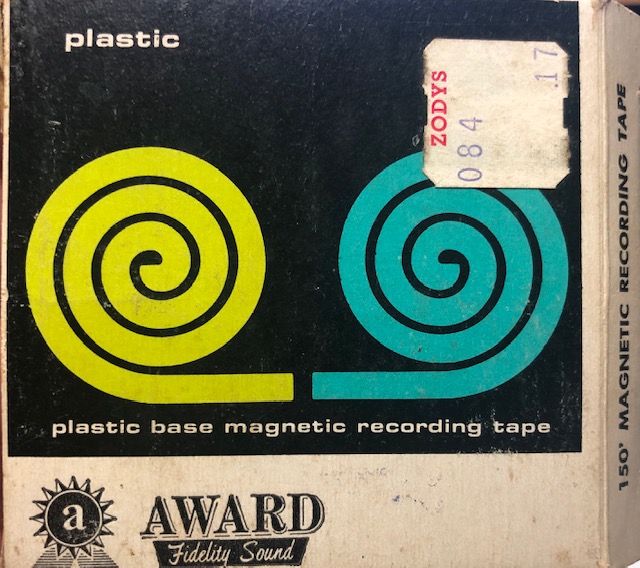
A few years later my dad upgraded my equipment and gave me a Crown CTR-5400 with capstan drive, 5" reels, and an A/C power supply. While the machine was mono I didn't care because most of what I taped was from AM radio. I took this machine with me on all of our family's cross-country road trips along with plenty of batteries. I still have some reels recorded with that machine.
I need to mention that while my dad was overseas I did get the run of his hi-fi system which, during those later 1960s, consisted of a Sansui 1000A receiver, a turntable, which I think was a Garrard, Pioneer speakers, and a Sony TC-600D tape deck. That Sony was a fine machine and I used it to copy many a vinyl disc. It was also during this time that someone, a friend or relative, I can't remember for sure, was headed overseas and asked me to babysit their reel-to-reel. I gladly did so. It was an Akai (or Roberts) M-8 or thereabouts. Another fine machine in its day.
Getting Serious
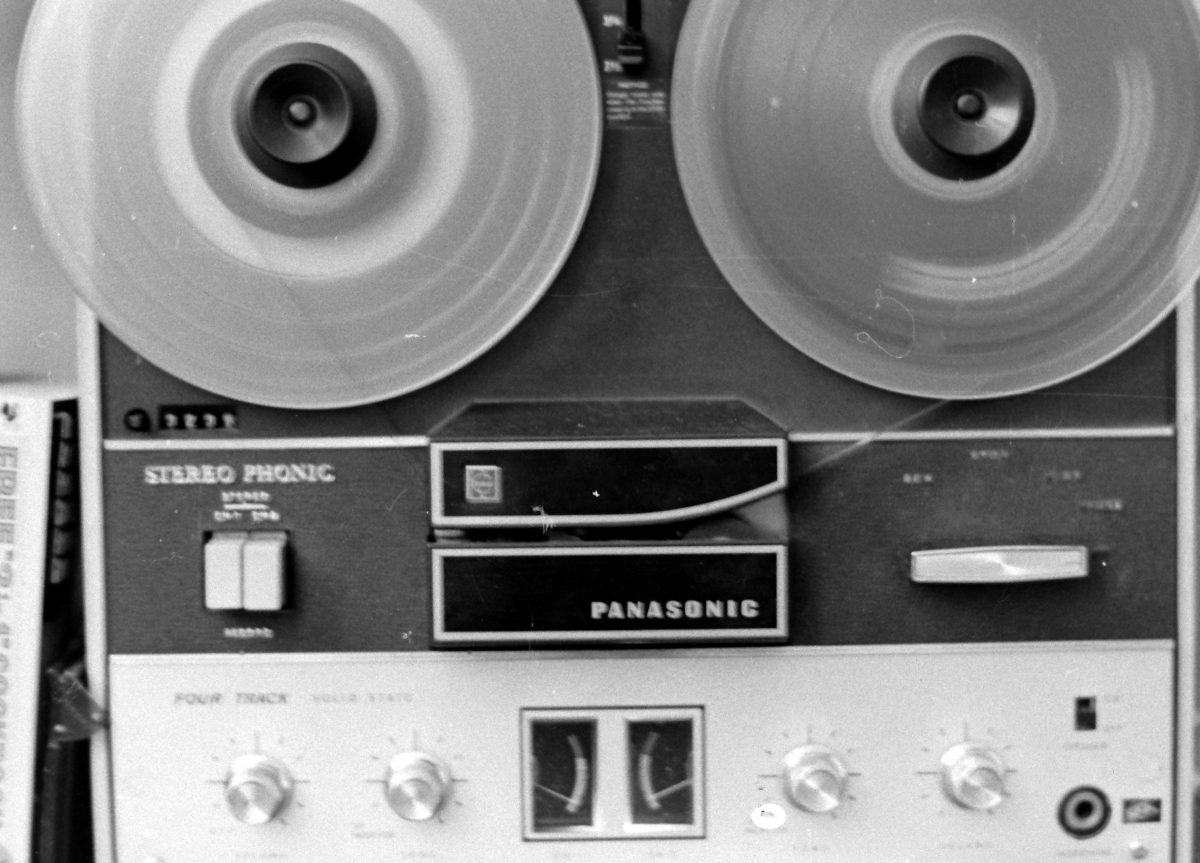 My own entry into 7" reels and stereo recording starting in about 1968 when my dad gave me a Panasonic RS-706. It featured 3 speeds, internal amps and speakers, and was quite portable. I liked the slow speed of 1-7/8 ips for recording the spoken word and used this machine to start building my old time radio show collection. I used the heck out of this player for a steady 4 years until I went away in the Army.
My own entry into 7" reels and stereo recording starting in about 1968 when my dad gave me a Panasonic RS-706. It featured 3 speeds, internal amps and speakers, and was quite portable. I liked the slow speed of 1-7/8 ips for recording the spoken word and used this machine to start building my old time radio show collection. I used the heck out of this player for a steady 4 years until I went away in the Army.
The Army Years
I received my draft notice in 1972 and reported to the induction center in October of that year, the 13th of the month, a Friday. I was without my recorders for a while as I went from Fort Ord, CA to Fort Gordon, GA to Fort Dix, NJ to Camp Drum, NY and then back to Fort Dix. Once I settled back in New Jersey, my parents came back for a visit and asked what they should bring and all I really wanted was my that tape player, my small collection of tapes, and my guitar. It was great to have that stuff back with me again.
That only lasted until the summer of 1974 when the unit I was assigned to was dissolved and I was told to report to the assignment center in Frankfurt, Germany. I had to leave my reel-to-reel back in the states and travel to Europe with just a duffle bag. In Frankfurt they looked down the list for the next open assignment for my MOS (95B) and gave me instructions for finding my way to Wackernheim, about 60 kilometers away. It turned out that I'd been assigned to security on a Nike Hercules missle site. Not exactly remote but a hike to get to the nearest city. I settled in to my 24-hours on, 24-hours off shift at the site.
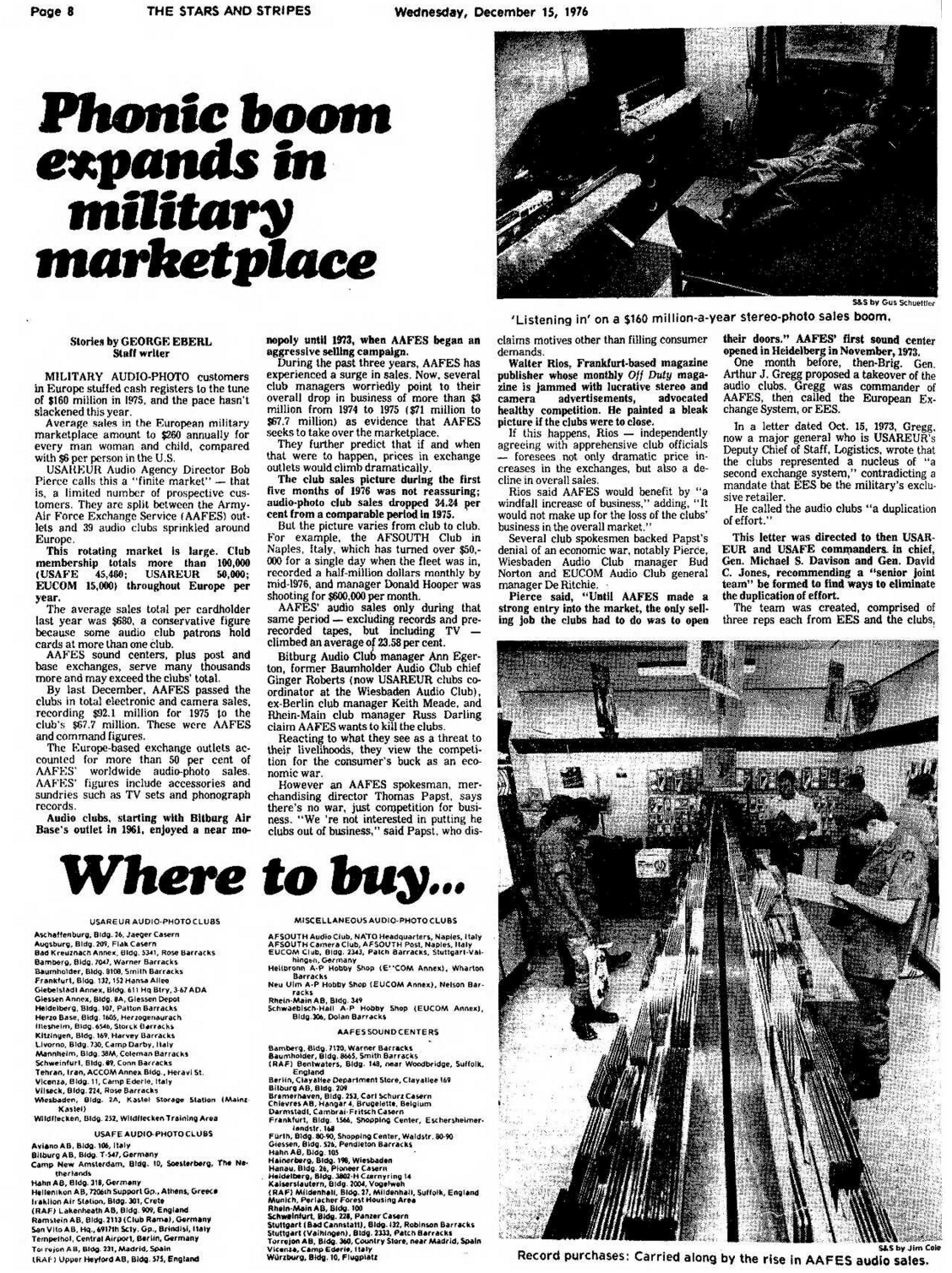 Since I did have access to the Air Force Exchange in Weisbaden, the Weisbaden Audio-Photo Club, and could order from the Pacex (Pacific Exchange System) catalog, I started building a hi-fi system of my own. I bought a Sansui QRX-7500 receiver, a Dual 1226 turntable, outboard Dolby units, a pair of Kenwood speakers, and an Akai 202D-SS reel-to-reel. My roommate bought a set of speakers so we had quad in the room. I also bought 4 cases of tape (48 reels) and went about filling them up with music. In an Army barracks there is no shortage of music and we were "sharing" like crazy. I also taped quite a few albums at the Weisbaden Audio-Photo Club. They had dubbing booths and a large collections of factory-recorded tapes for check out. If the place wasn't busy I'd take up more than one recording booth at a time. I go into more detail about the Audio-Photo Club on the Akai 202D-SS page, including a copy of their music library catalog.
Since I did have access to the Air Force Exchange in Weisbaden, the Weisbaden Audio-Photo Club, and could order from the Pacex (Pacific Exchange System) catalog, I started building a hi-fi system of my own. I bought a Sansui QRX-7500 receiver, a Dual 1226 turntable, outboard Dolby units, a pair of Kenwood speakers, and an Akai 202D-SS reel-to-reel. My roommate bought a set of speakers so we had quad in the room. I also bought 4 cases of tape (48 reels) and went about filling them up with music. In an Army barracks there is no shortage of music and we were "sharing" like crazy. I also taped quite a few albums at the Weisbaden Audio-Photo Club. They had dubbing booths and a large collections of factory-recorded tapes for check out. If the place wasn't busy I'd take up more than one recording booth at a time. I go into more detail about the Audio-Photo Club on the Akai 202D-SS page, including a copy of their music library catalog.
Post-Military Life
Upon my return to civilian life my income situation and the high cost of living in Southern California really limited acquisition of addition equipment especially since hi-fi wasn't my only hobby.
However, I did scare up a second pair of speakers and fancier SQ decoder, a Sony SQD-2070. I was on a mailing list for reel-to-reel tapes (you know, from the postcard that came in the box of tape) and received a mailing that said that factory-recorded reel-to-reel tapes were dead and a major supplier of them was liquidating their inventory on a one day sale at their warehouse. I drove into some downtown Los Angeles industrial area and picked up 16 reels which included a couple of quads. Some good titles in the mix too and at something like $5.00/reel.
Now we are in the late-70s, early-80s and my dad decided to upgrade from his Sony TC-600D to an Akai GX-4000D and gave me the Sony. I also added my first cassette deck, a Sankyo STD-1900, a cheap BSR equalizer, and at some point, a CD player. I used to visit a "connoisseur" shop in Orange County, Havens and Hardesty, and ended up bringing home a few additions: a Nakamichi BX-150 cassette deck, a Bang and Olufsen Beogram 5000 turntable, and a Tandberg TD20A SE reel-to-reel.
The System Evolves | |
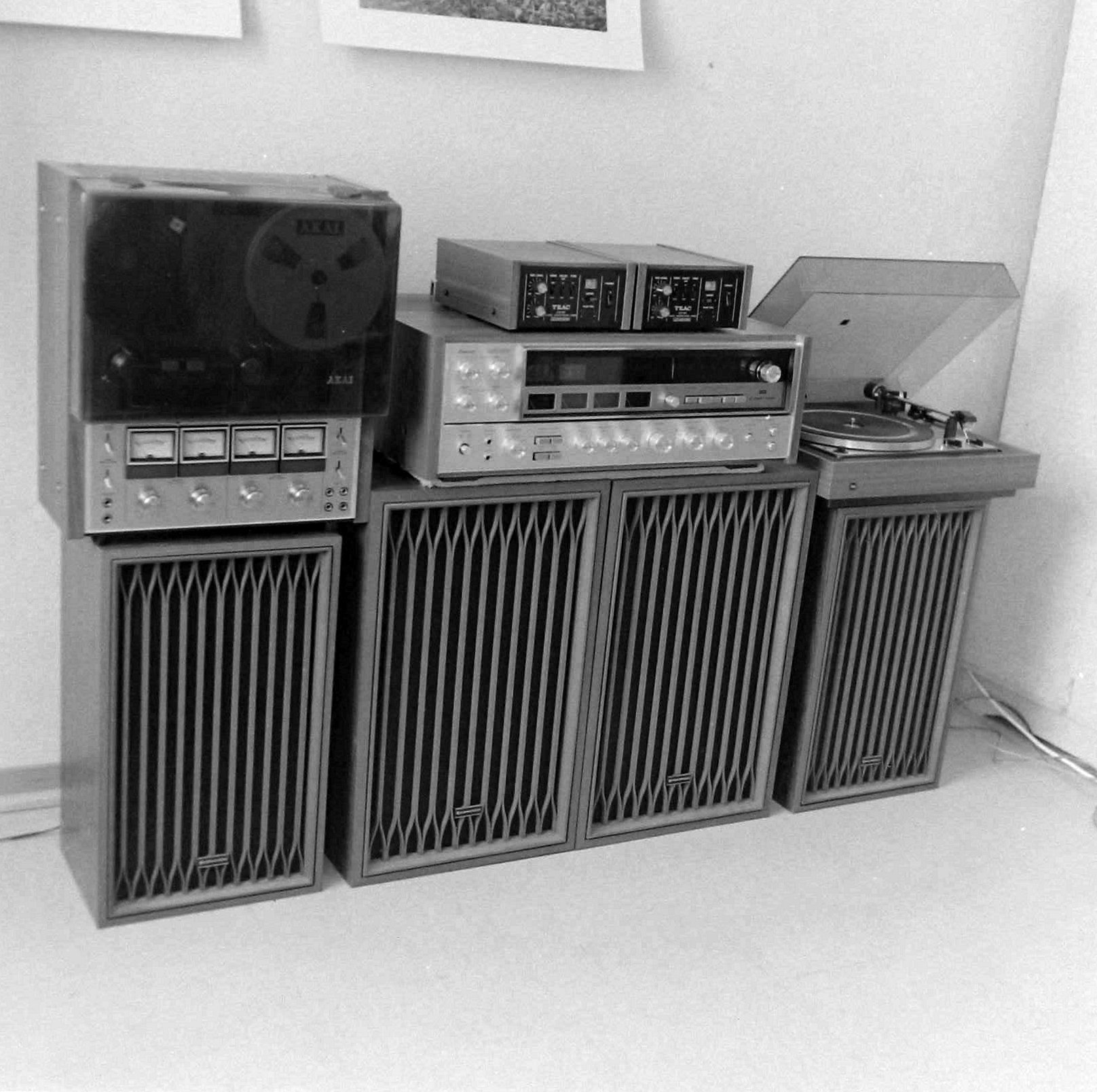 | 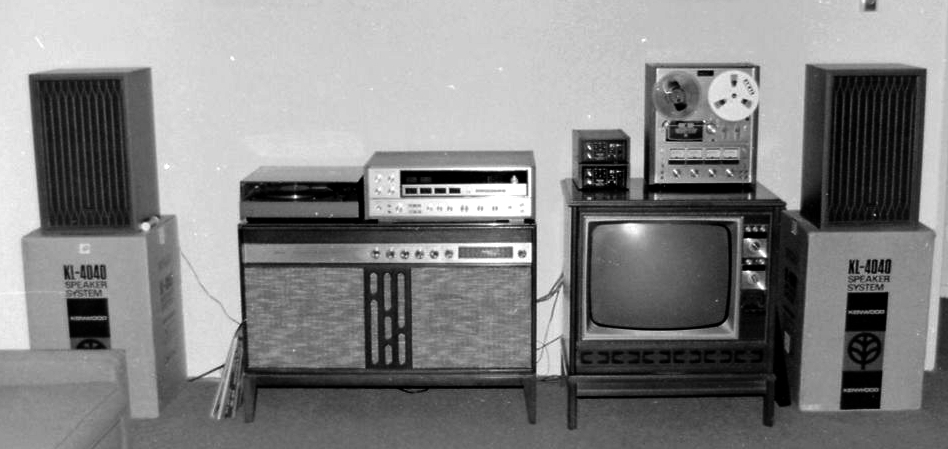 |
My system in 1975, Wackernheim, Germany | My system in June 1976 |
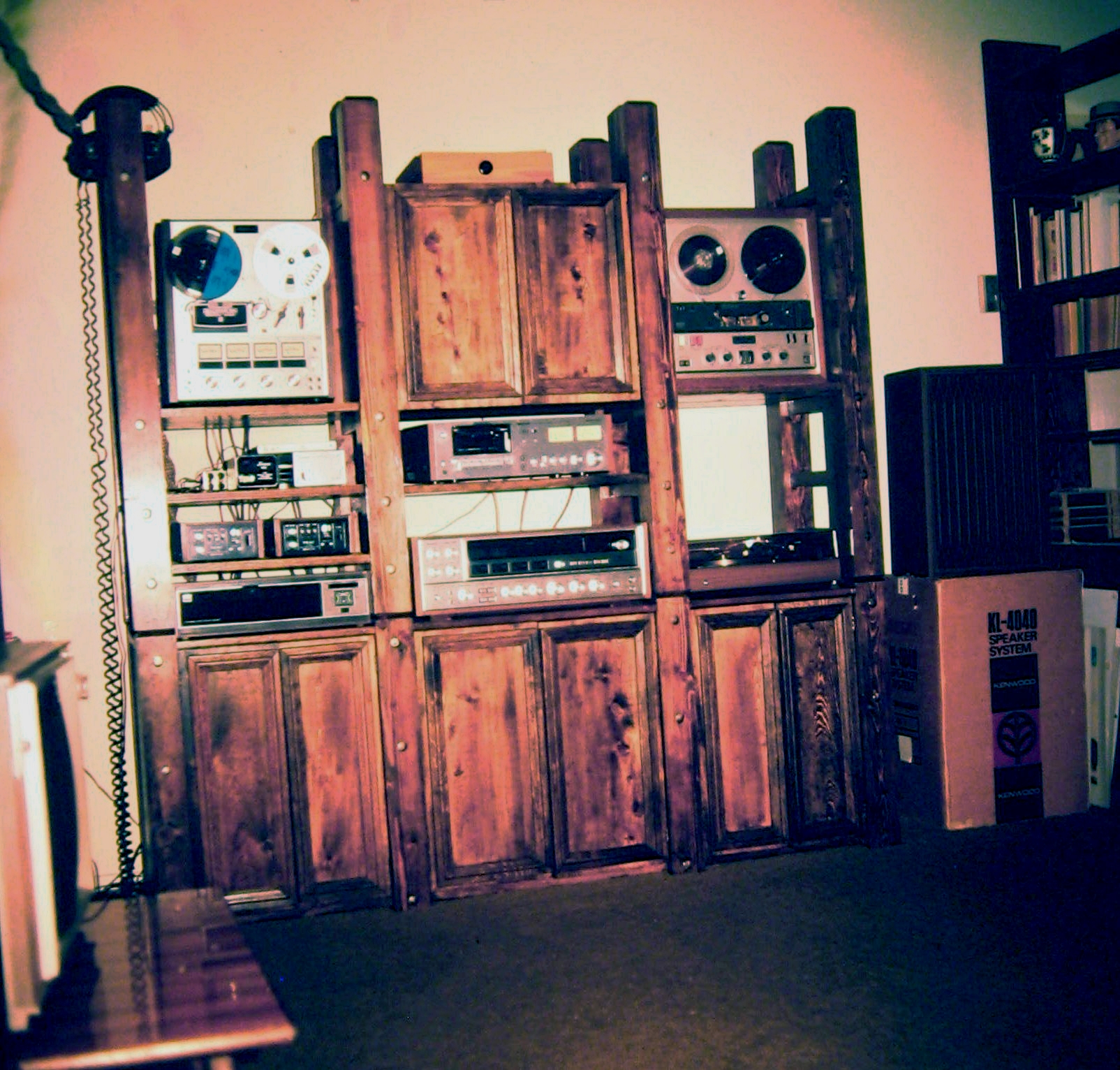 |
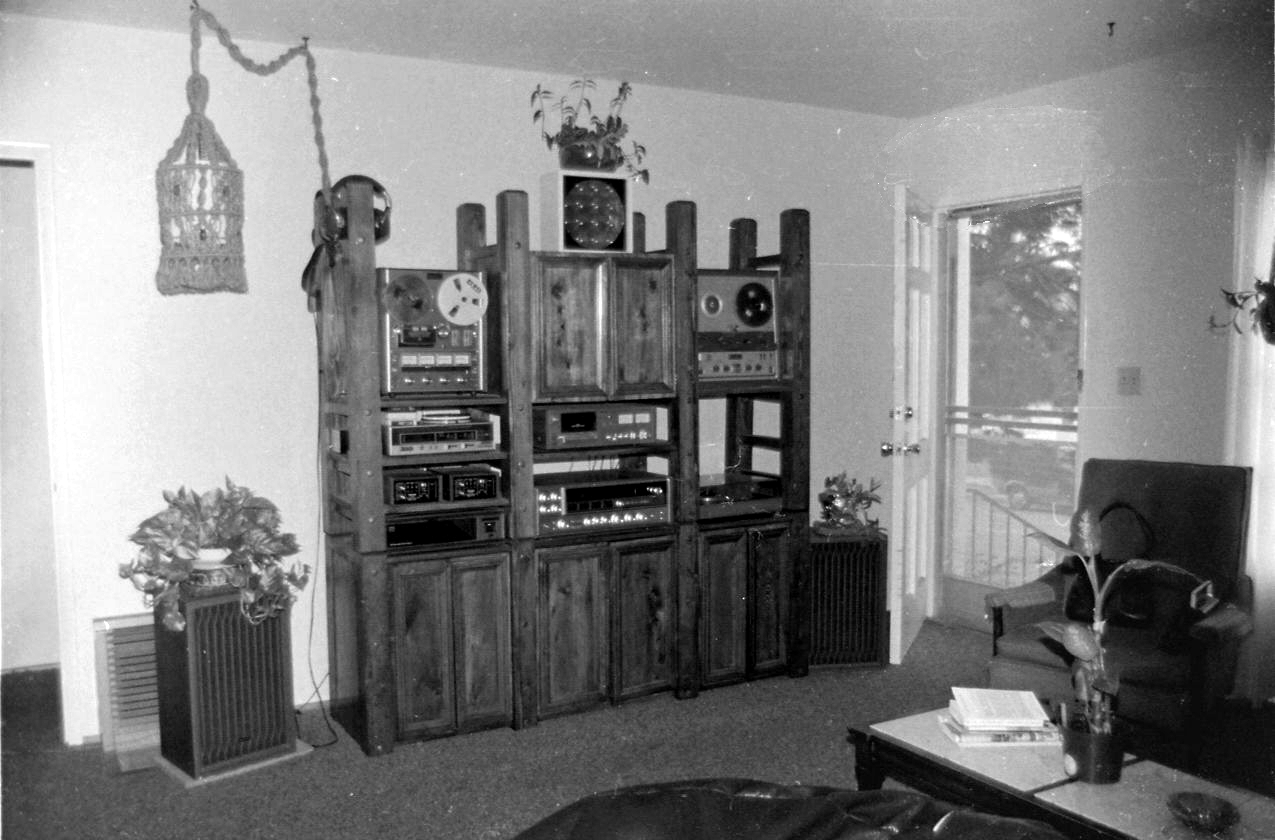 |
My system in 1978 |
My system in September 1978 |
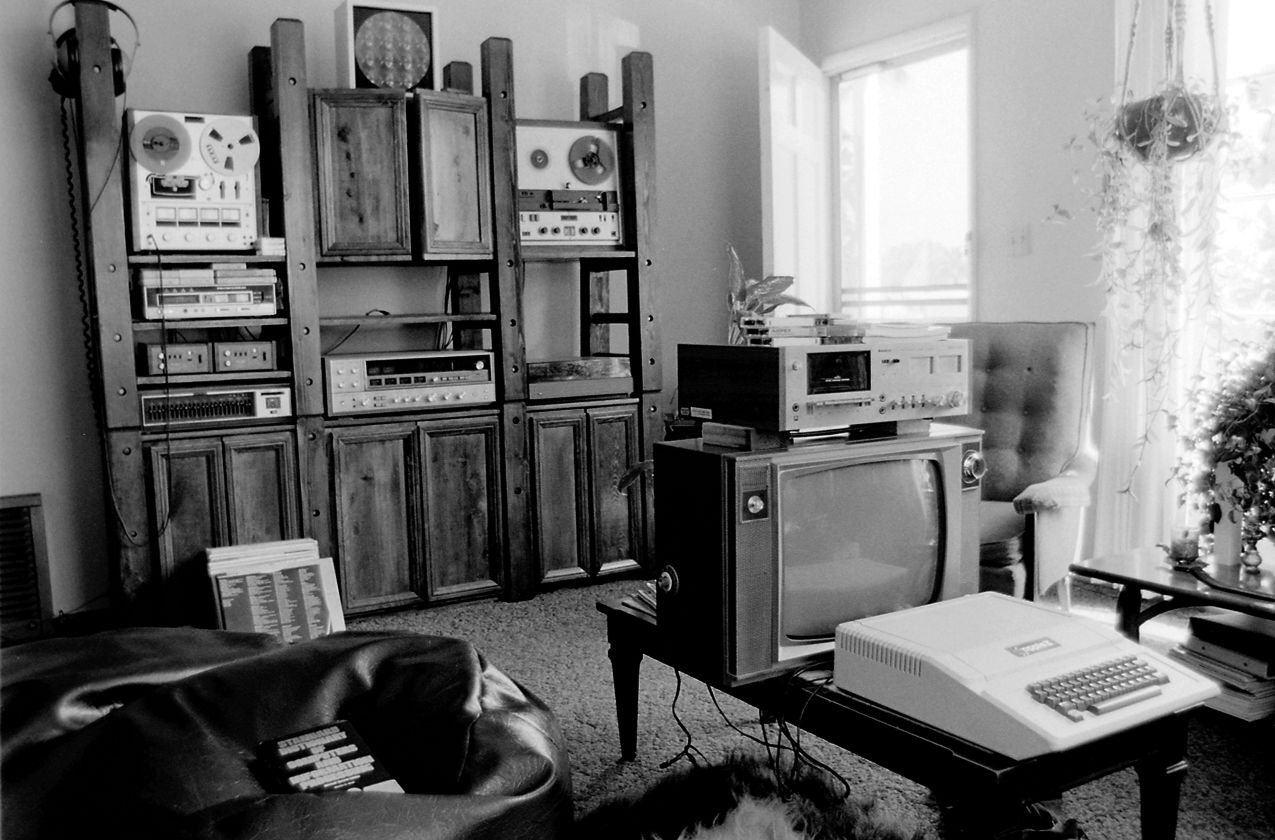 |
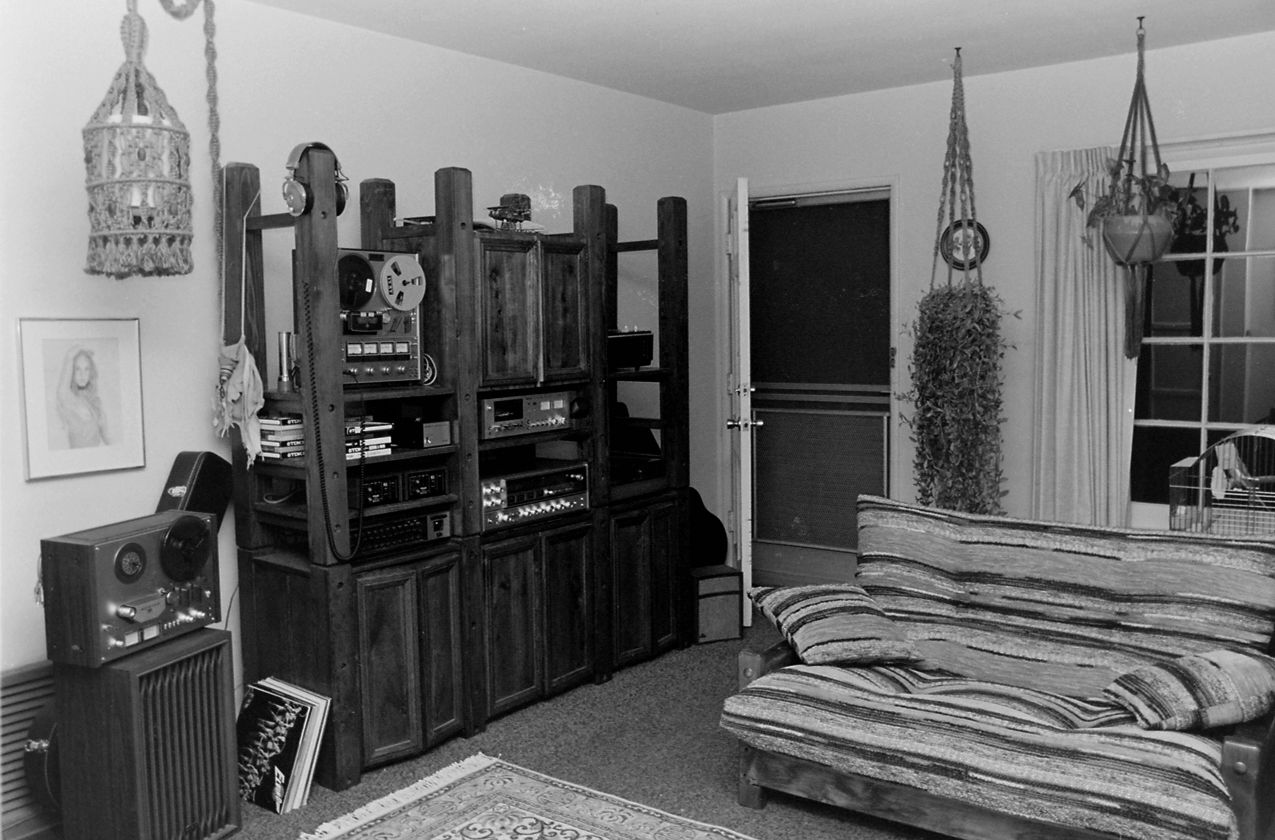 |
My system in March 1979 |
My system in April 1981 |
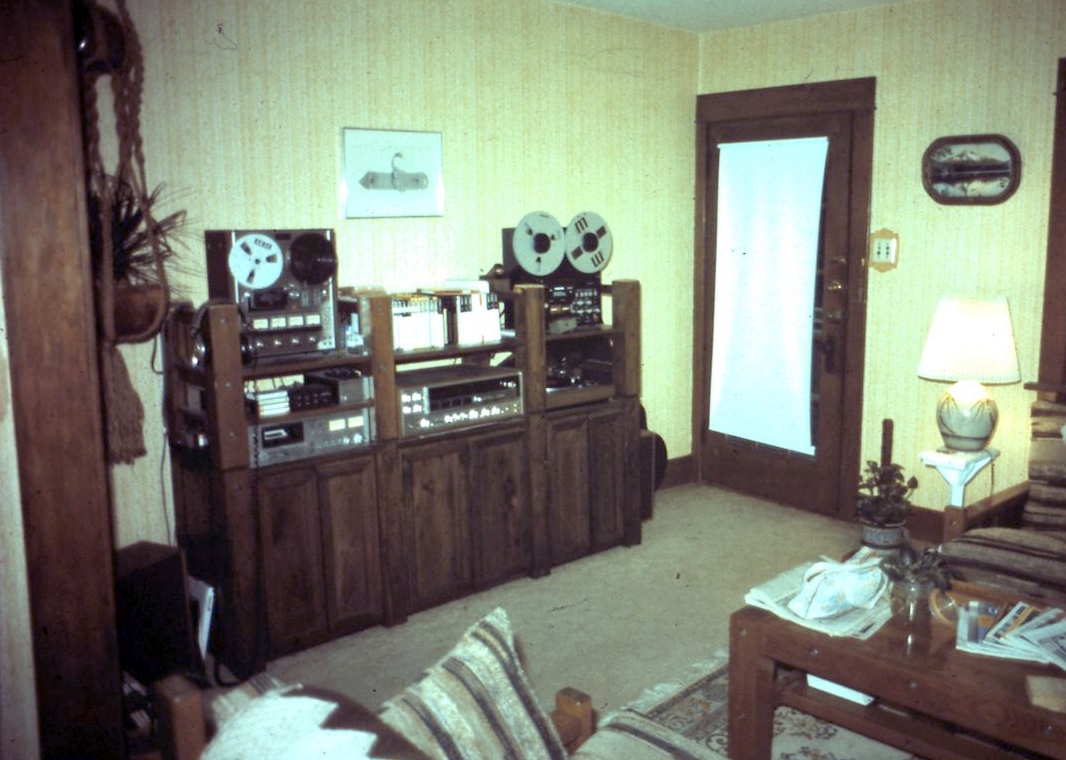 |
|
My system in May 1985 |
|
A friend of my dad's, another navy guy, asked me if I still did reel-to-reels and I said I did. He told me that his no longer worked and wanted to know if I could transfer a bunch of his reels to cassette and I could keep the reel tapes and he'd give me his deck. I took on the project. The deck was a an Akai GX-260D and it would not play. After I transfered all of his reels to cassette using my Akai 202D-SS, I pulled the front panel and found a microswitch that had charred. Hmmmm..... I drilled out the rivets that held the switch together and saw that the contacts inside looked corroded and went ahead and cleaned them, taped the switch back together, and remounted it in the deck. It has played fine ever since. Sometimes you get lucky.
Midlife Changes
Some years transpire during which I went back to school, had another kid, changed careers, and moved to Montana. Somewhere along the way I picked up various cassette players/radio, and my dad's Akai GX-4000D along with his Teac A-170 top loading cassette deck. My Sansui QRX-7500 had issues and was retired, replaced with a Sony and then an Onkyo receiver. The Akai 202D-SS was set aside and that Akai GX-260D became my daily player and, sometimes, the Tandberg TD20A SE.
A chain of events started in about 2002 that intoduced me to more tapes and machines. I helped set up an exhibition on vintage broadcasting at a local museum and the local paper did a story about it and featured me and my passion for collecting old time radio shows. Following that I received a call from a woman who was headed to a retirement home and needed to downsize which included her very late-husband's tapes and machines. I bought the tapes, about 200 paper-backed reels, and 3 machines: the Brush BK-401, the RCA SRT-403, along with a Webster-Chicago Model 80 Wire Recorder. The tapes were turned into the Paper Tape Archive project. A few years later, an acquaintance who knew of my interest in found tapes, told me that his father-in-law's estate sale was coming up and maybe I'd want to get an early look. I brought home 563 reels and an Akai X-2000S, eventually turning those tapes into the 600 reels project.
The Retirement Years
When I hit retirement I went on hiatus from hi-fi for a while and got more into my old cars, computers, art, and other endeavors. However, in the spring of 2018, while recuperating from some health issues, I decided that what I really needed to do was to rebuild that mid-70s hi-fi system of mine. The key was that almost every piece of equipment I had ever acquired I still have sans the Sankyo STD-1900 cassette deck and one pair of headphones, both of which had problems and didn't make the cut when I moved to Montana. To this end I dug up all the old stuff and started hooking it all back up and seeing what worked and what needed work. This project is ongoing as of this writing.
I also decided that I'd expand my reel-to-reel herd and picked up, through online auctions and other sources, another Akai 202D-SS, an Akai 280D, an Akai 1730D-SS, and, locally, an Akai X-100D and a Roberts 1630, the latter two because they were local and inexpensive. I also picked up 3 8-track players, the Akai CR-80D-SS, the Realistic TR-801, and the Panasonic RS-805. And, yes, I've provided a new home for some reels and 8-track tapes too. And, more lately, 2020, I picked up a Panasonic RE-8860 AM/FM Quad 8-track player, inexpensive in an online auction, and then a friend, knowing my interest, cleaned out his garage and found a Radio Shack TR-167A 8-track player.
8-Tracks
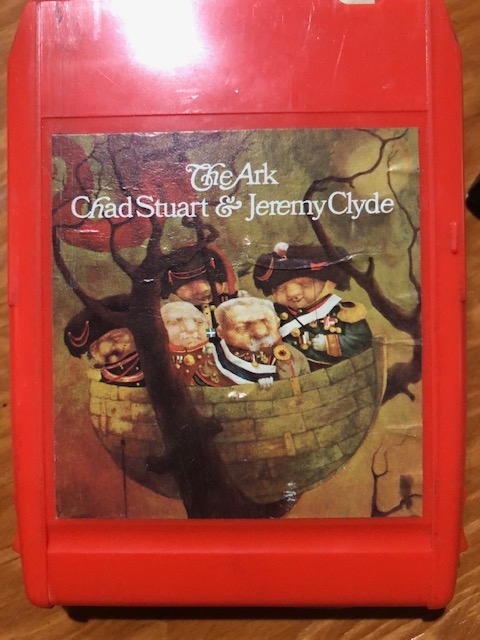 Yes, 8-tracks! Love 'em or hate 'em, they are part of our magnetic recording tradition. Being old enough to be "pre-cassette," 8-tracks were how we played our music on the road and even in our homes. Yes, I was into them and I am not ashamed to admit that I still am. They are error-prone, easily damaged, and shift tracks right in the middle of your favorite song but it is that very funkiness that still makes them cool.
Yes, 8-tracks! Love 'em or hate 'em, they are part of our magnetic recording tradition. Being old enough to be "pre-cassette," 8-tracks were how we played our music on the road and even in our homes. Yes, I was into them and I am not ashamed to admit that I still am. They are error-prone, easily damaged, and shift tracks right in the middle of your favorite song but it is that very funkiness that still makes them cool.
I did buy a few tapes back in the day, late 60s-early 70s, but most of my limited resources went into vinyl so, of course, I had to figure out a way to record my own. Not having an actual 8-track recorder didn't stop me. After all, I had an 8-track player to provide the mechanical transport and I had a reel-to-reel that did have the electronic recording function so why not marry them together?
Yes, I de-soldered the wires from the head of my Panasonic RS-760S and connected those wires up to the head on my Muntz 4/8-track. Easy, right? Hey, it worked and I still have a box full of those tapes that I made using that method and they sound pretty good, considering.
Lately, over the past year or so, I have been picking up tapes at online auctions. The collection now numbers over 400 tapes, which I think might be enough. I have a half-dozen 4-tracks (the competing format back in the 1960s) and the rest are standard 8-tracks except for a few quadraphonic ones. And, yes, I do know how to repair the tapes, an absolute necessity in this hobby.
The Cassettes
Audio cassettes were around but I didn't adopt that format, other than recording a few old time radio shows off the air, until around 1978 when I picked up a Sankyo STD-1900. The motivation was, most likely, so that I could make my own mix tapes for the car. Also, I'd borrowed a really cheap portable to use as a data drive with my Apple ][ computer and figured I'd go ahead and buy my own deck and get one that worked with my audio system as well as the computer. Based on the fact that I have some old cassettes I made of old time radio shows in the very early 70s I must have had access to a cassette deck before that but I don't remember what it was. It was probably my dad's Teac A-170.
Somewhere along the line I got the bug to do an upgrade and bought a Nakamichi BX-150. The Sankyo was still working but the "Play" button/paddle had broken off and I couldn't figure out how to fix it so it was retired and didn't make the move to Montana in 1991. The Nak remained a solid performer until the rewind/fast forward started getting slow. I eventually replaced the idler tire to solve that problem.
As cassettes machines started to wane, I picked up a Sony TC-WE635, a dual well machine, that I used for duplicating MANY old time radio programs when trading programs in that hobby took place primarily on that media. That machine still plays well and I just recently finished using it to digitize most all of my cassette tape collection.
That cassette tape collection numbers about 800 tapes. Half of those are old time radio shows, about 250 are other spoken word material, and about one hundred tapes are of music.
As I went through all the cassette players in the house I found that I had more than I realized when I counted the ones our kids used when they were young and several Walkman-types. It seemed for a while that everything that played audio came with a cassette player installed.
The Wire Recorder
This gem, a Webster-Chicago Model 80 Wire Recorder, was acquired when I picked up those aforementioned paper tapes. It does work, however, it needs recapping of the power supply before I can figure out what is on the three spools of wire that came with it. A job for another day....
The Automotive Players
Growing up in the era before CDs and MP3 players, my cars were outfitted with tape players, first with 8-tracks, and then with cassettes. My memory is a bit hazy but I think my first automotive tape player was a Craig/Pioneer 3121 in my 1962 Oldsmobile Dynamic 88 that was then moved to my next vehicle, a 1956 Ford pick up. After that it landed in my 1970 Ford Maverick. Around the same time I came into possession of a Muntz 4/8-track. I am pretty sure that I used it as home player/recorder in a project I did with my Panasonic RS-760S. That Muntz player now resides in my 1959 Volvo 544. When I made the change to cassettes, sometime in the mid- to late-1970s, I bought a Pioneer KP-500 Supertuner. That was a great unit and it moved from one car to another over time, now residing in my 1965 Triumph TR4. I bought a couple more Pioneer Supertuner units for various cars and trucks. My current daily driver, a 1983 Volvo 240 wagon, has a Sony EXR-20 cassette player. My recent, 2020, addition is an Bowman Astrosonic 8-track player which in installed, under dash, in that 1965 Triumph TR4.
Conclusion
While some of these devices are trivial, and certainly not hi-fi, all are like old friends which is why, I suppose, I still have them with me.
For a more detailed look at each unit, click on the links in the menu on the left.
Click on an image to enlarge it.
Updated December 2020.